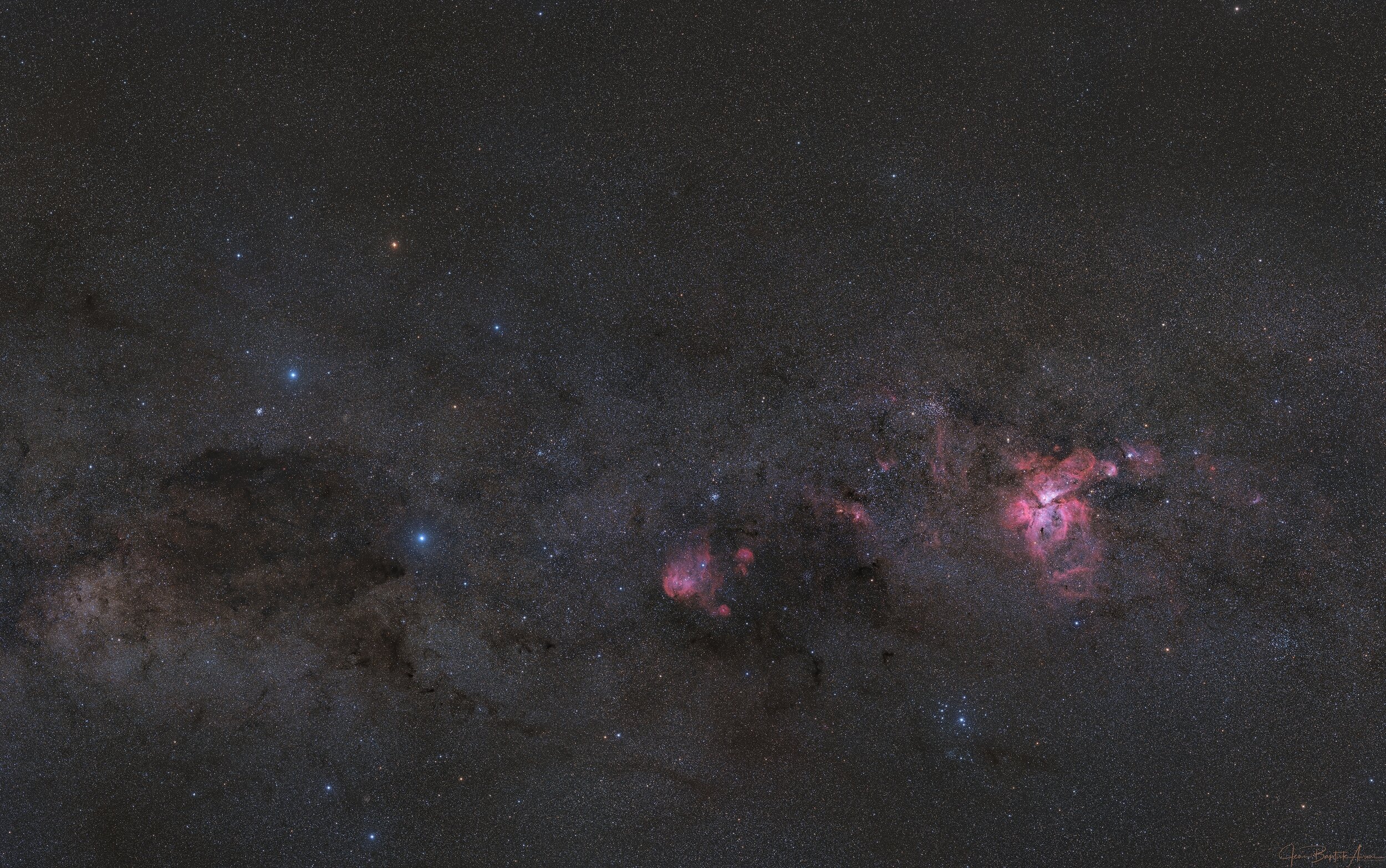From Southern Cross to Carina nebula
I am happy to share with you this image that kept me busy for more than 3 months, both for acquisitions and processing.
This image is a mosaic of 25 tiles, made over 3 months and 24 nights between April and June 2020.
It presents a particularly rich region of the southern sky of 300 degrees square: the iconic Southern Cross in the Milky Way, and some beautiful jewels scattered in the constellations of Crux, Centaurus, Carina, Vela and Musca : emission nebulae, clusters, dark nebulae...
Among the most notable objects, we can find the Carina nebulae, the Chicken run, the Statue of Liberty, the Coalsack Nebula, but also beautiful open clusters such as the jewel box, the Pincushion Cluster, the southern Pleiades, the Pearl cluster, etc.
This image is composed of 25 tiles, each composed of 3 RGB layers + Ha and OIII layers for the nebulosity areas. I have also added some more detailed images previously made for nebulae.
In total, there are :
- 820 raw images for the RGB (180s), Ha and OIII (600s) layers;
- 75 stacked images for the RGB layers (25 tiles per color) + 4 Ha and OIII images (on the nebulosity areas);
- 50 hours of exposure.
All the pre-processing and processing was done with Pixinsight.
The assembly of the mosaic was done with Astro Pixel Processor.
The final corrections (contrast, colors, etc.) were made with Photoshop.
I strongly recommend you to view this image in "full" zoom-able version in order to really appreciate it : https://millenniumphoton.com/le-projet-croix-du-sud/
(the image presented here is a 25% version)
You will also find more information about this project and this image, as well as a short description of the 20 most notables objects.
I hope you will enjoy looking at this image! :)
Jean-Baptiste
Copy write: Jean-Baptiste Auroux
AAPOD2 Title: From Southern Cross to Carina nebula
AAPOD2 Page Link: https://www.aapod2.com/blog/from-southern-cross-to-carina-nebula
Submit Your Photo!


